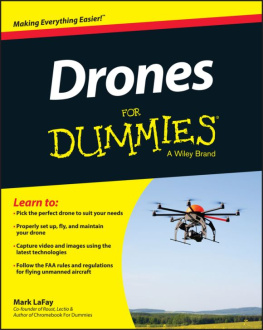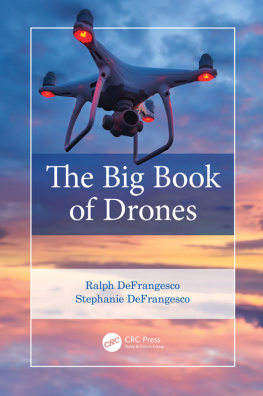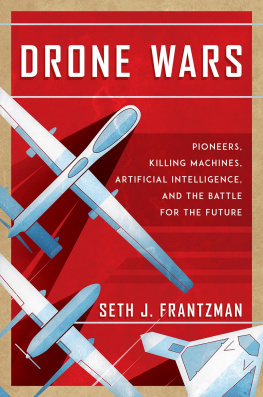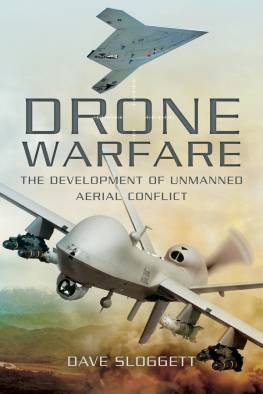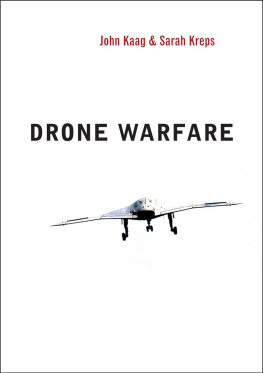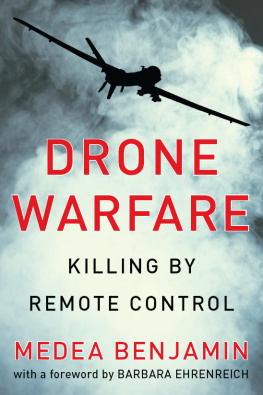Swarm Troopers
How Small Drones Will Conquer the World
by David Hambling
Swarm-Troopers.com
Publishing Services Provided by

Archangel Ink
Copyright 2015 David Hambling
This eBook is licensed for your personal enjoyment only. This eBook may not be re-sold or given away to other people. If you would like to share this book with another person, please purchase an additional copy for each recipient. If you're reading this book and did not purchase it, or it was not purchased for your use only, then please return to Amazon.com and purchase your own copy. Thank you for respecting the hard work of this author.
Special thanks to Philip Hemplow, Tim Radford, Jrgen Altmann, Eugene Tan and Paul Edgington for helpful comments and suggestions on the manuscript.
Visit the website Swarm-Troopers.Com for a gallery of drone images, regular blog updates and news on the progress of small drone technology and special offers.
Table of Contents
Introduction
The Farnborough International Airshow is a big event in the aviation worlds calendar. Every two years the whole industry gets together for a week to make deals, scope out the competition, show off their latest wares and talk shop. The highlight of Farnborough 2014 was supposed to be the public debut of the F-35 Lighting II, a stealth warplane from Lockheed Martin.
Unfortunately, engine problems left the F-35 fleet grounded. The only one at Farnborough was a display model for people to sit in and have their picture taken.
Airpower is so dominant in modern wars that in a sense the F-35 represents the future of warfare, the cutting edge of the worlds most formidable fighting machine. The US Air Force, Navy and Marine Corps plan on buying about two and a half thousand F-35s between them, at between $100 million and $200 million per plane. The exact price is fiercely debated, as we shall see. The aircrafts no-show was symptomatic of the many problems experienced during development, but the largest aircraft purchase in US history has gone too far to stop now. Allies including the UK, Italy, Israel, South Korea and Turkey have already placed their orders.
While the F-35 was absent, a much smaller aircraft did make its debut at Farnborough. The Micro Drone 2.0 is a palm-sized flying toy with four rotors. A salesman was showing how well it flew, automatically righting itself after being tossed into the air. He was doing a brisk trade, selling boxed drones over the counter at $85 apiece. What made the Micro Drone so appealing was a video camera that turned it from a toy into a tool.
Everybody wants one because theyre such great gadgets, the salesman told me. And because you can actually do practical things like check the guttering, you can justify buying one to your wife.
The tiny Micro Drone did not seem to have much in common with the thundering jets tearing up the sky outside. However, it was similar to military quadrotors on display, slightly bigger, tougher, and more expensive versions of the same camera-carrying design. One, the AV Sparrow, was little bigger than the Micro Drone, others weighed a few pounds. Their fixed-wing counterparts, looking like radio-controlled models with a four-foot wingspan, have become one of the soldiers most trusted tools, as we will see in Chapter 3. Moving up in scale there are drones like the Puma, Scan Eagle, and Shadow, which resemble light aircraft. The largest, Shadow, has a wingspan of fourteen feet.
Stepping outdoors at Farnborough you could find the next size up, the Predator and the Reaper. These are armed drones the size of manned planes that spy and carry out strikes in Afghanistan, Pakistan, and elsewhere. These are still small fry in the aviation world. The F-35 is six times the weight of the Reaper, as well as being faster, stealthier, more agile, and able to carry a much greater load of weapons. At a fundamental level though, both are warplanes doing the same job, although in one case the pilot stays on the ground.
A souped-up Micro Drone could carry out a military mission, scouting enemy positions from a distance. Small drones can carry a lethal explosive warhead; US Special Forces have used them in Afghanistan against insurgent leaders known as high value targets. The question is not whether small drones are useful, its how useful they are compared to manned aircraft.
Money brings the issue into sharp focus. Small drones, notably the DJI Phantom series, are already transforming television and movie making by providing stable camera platforms at bargain basement rates. These are bigger versions of the Micro Drone, but it costs less to buy one outright than to hire a helicopter for an hour, and they can film in urban canyons and other places where no helicopter can fly.
This book focuses on what a swarm of thousands or tens of thousands of small drones can do for a fraction of the price of a single F-35. The rate at which the technology is developing, and the way evolution favors small drones with their short generation times, is putting manned jets on the losing side. The technology developed for smartphones puts the big guns on the side of the small drones.
Ten years ago, I wrote Weapons Grade: the Links between Modern Warfare and Our High Tech World, about the high tech in everyday life that originated with the military. From GPS and the Internet to digital cameras and jet airliners, all sorts of gadgets were originally developed for war. The building blocks of modern electronics, integrated circuits, and microprocessors came from the defense sector. It used to be something of a clich to say that whether it was computers or aircraft, the Pentagon was always twenty years ahead of what was commercially available. You could see the future by looking at what the military had.
In the last decade, the situation has changed. Its not all about iPhones, although Apples ground-breaking smartphone and record-breaking profits are obvious indicators of strength. Smartphone sales have accelerated from zero in 2006 to over a billion smartphones shipped in 2013. Calling these devices phones is deceptive: each has more computing power than previous desktop computers, as well as a digital video camera, GPS navigation, digital communications, and a stack of other sensors and gadgets built in.
The mobile phone industry has the power and momentum of a freight train. Billions of dollars are spent annually on advancing technology just for small electronic devices. Aggressive schedules see a new generation appear every two years. New types of software and hardware are constantly emerging. A phone that merely delivers incremental improvement over the previous generation is a letdown; every phone is expected to be astonishing.
In the course of this market-fueled acceleration, consumer electronics have outstripped their military counterparts. These days soldiers are less likely to be awestruck at the gadgetry they are issued than shocked by how clunky it is compared to the sleek lightweight devices they have at home.
Defense contractors argue that their products cannot be compared with consumer electronics. They have to comply with demanding standards that smartphones are not subject to rugged enough to survive the battlefield, able to withstand high and low temperatures, must not create electronic noise and interfacing with existing military systems. Selling to the military means extensive testing and certification, with the related delays and costs. Add to this a military bureaucracy that can take years to agree on the specification it wants in the first place, overseen by a political leadership that may cancel, delay, or divert any project depending on the shifting sands of expediency, and you have a recipe for a long time between generations.
Each generation of electronics roughly translates to a doubling of processing power, memory, pixels, or other relevant metrics. If a commercial product goes through a generation every two years, and the military cycle takes six years per generation, then in twelve years the military product goes from being four times as powerful as the competition to a quarter as powerful. As a result, the prospect for the military afterwards is watching disappearing taillights as their rivals pull ever further ahead. The military has recently started taking the obvious course of adapting commercial electronics rather than developing their own.
Next page



